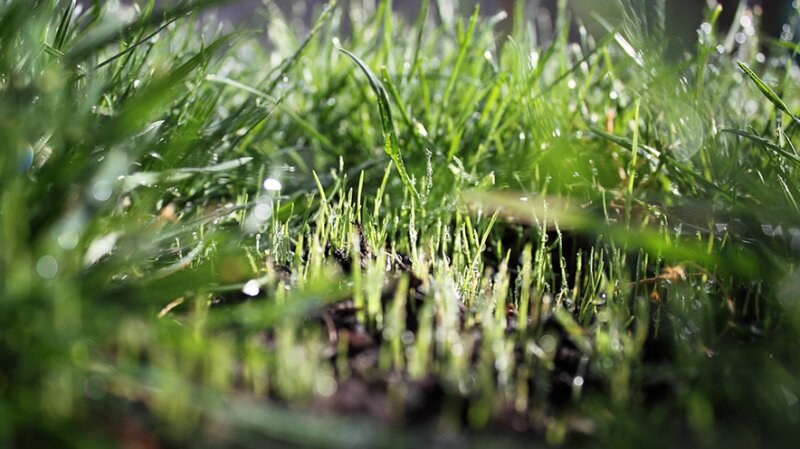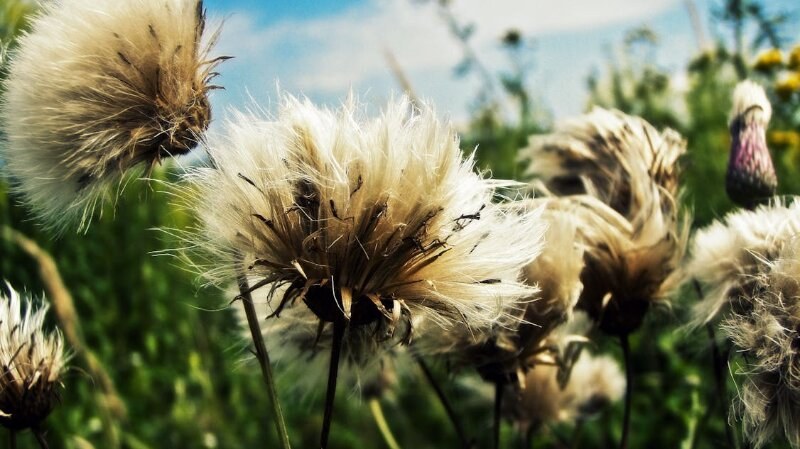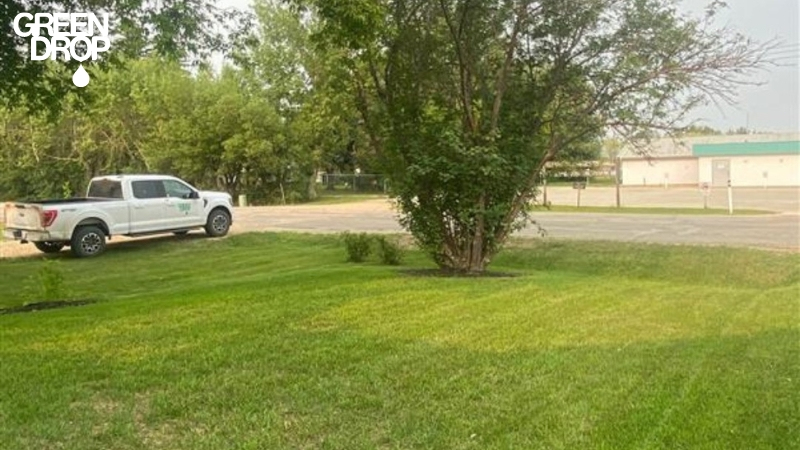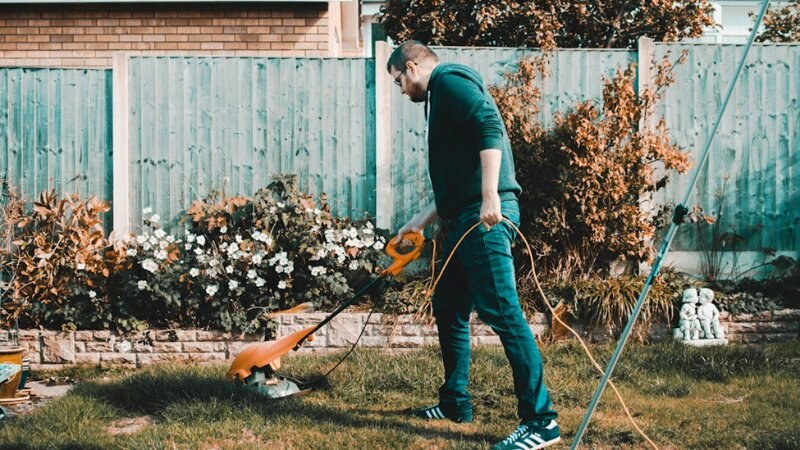Overseeding and Weed Control in Calgary: A Winning Combination for a Healthy Lawn
Reading time: 7 minutesHave you ever seen a lawn in Calgary so thick and green that it could make a golf course jealous? Well, sometimes, it’s about giving your lawn a little special love with overseeding and keeping those pesky weeds in check. Lawn overseeding and weed control go together like peanut butter and jelly; they are great on their own but amazing together. Let’s dive into how combining these two can turn your Calgary lawn into the talk of the neighbourhood.

Getting Into the Grassroots of Lawn Care
Your lawn will tell you when it needs overseeding; just make sure you’re listening. Overseeding is like giving your lawn a new coat of paint. You spread new grass seeds over your turf, filling in bare spots and boosting density.
This is particularly crucial in Calgary, where the frigid winters and hot summers can leave lawns looking a little worse for wear. A denser lawn looks lush and inviting and serves as a natural weed deterrent. The thicker your grass, the less room for weeds to take root and thrive.
On the other hand, weed control is all about unwanted plants competing with your grass for vital resources. If left unchecked, weeds aggressively steal water, nutrients, and sunlight from under your grass.
Implementing effective weed management practices reduces competition for resources and supports your grass's overall vitality.
Together, overseeding and smart weed control form a winning duo, protecting and enhancing your lawn’s health.
The Timing—Overseeding & Weed Control

Integrating weed control with overseeding requires careful timing to ensure both support rather than undermine each other. It all comes down to the overseeding technique, timing of overseeding, herbicide usage, and post-overseeding care.
The key is to create an environment where new grass seeds can thrive without competition from weeds, yet without exposing them to potential harm.
Here are some things you need to keep in mind:
Overseeding Technique
Seed soil contact is important here for proper turf establishment. When overseeding, we need equipment that minimizes soil disruption while maintaining effective seed-soil contact. This approach preserves the existing turf better and promotes seed germination. That’s why it’s best practice to time your overseeding with aeration. This provides ideal conditions for your newly applied seed to thrive.
Timing of Overseeding
Spring and fall are ideal times to establish cool-season turfgrasses. Summers are the least desirable times to overseed your lawn, but it can be successful, provided there’s appropriate irrigation (so the seeds get ample water) and herbicide use (to eliminate weeds).
Herbicide Usage for Weed Control
If you have a lawn full of weeds, the first task should always be weed control. When addressing weed control options for a lawn, start with a targeted approach that ensures the health of the grass is not compromised. The application of herbicides should be selective, focusing on broadleaf weeds, which are the common culprits in lawns. These herbicides are designed to specifically target these weeds without damaging the grass.
It's important to use eco-friendly treatments that align with environmental standards and regulations. For example, Green Drop applies only approved herbicides where and when weeds are present. This means it controls weeds after they emerge and affects only broadleaf plants.
Effective weed control in lawns involves carefully selecting and applying herbicides that target weeds without harming the grass, complemented by eco-friendly practices.

Post Overseeding Care
The best way to maximize overseeding is to get the fastest germination and establishment before excessive weed seed germination.
- Water sufficiently. Initially, focus on gentle, consistent watering. The top inch of soil should stay moist but not soggy, requiring light watering once or twice a day until the new grass is established. This consistent moisture is vital for germination and early growth stages. Mulch to preserve moisture.
- Provide adequate nutrients to the soil for good establishment. When it comes to lawn fertilizer, a starter fertilizer applied before overseeding provides the initial nutrient boost. However, follow up with a gentle, slow-release fertilizer to continue supporting robust growth without overwhelming young plants.
- Mowing plays a strategic role in aftercare as well. Wait until the new grass is established and growing tall before the first cut, ensuring your mower blades are sharp for a clean trim. Cutting too soon can pull up delicate seedlings, so patience here pays off. To ensure any unestablished seed still has a chance to germinate, avoid bagging any clippings during this time; mulching is always your best option.
What Do You Do If You See Weeds After Overseeding
If you see weed growth after overseeding, it’s often best to wait until the new grass has been mowed a few times and established itself before applying any treatments. This wait time allows the young lawn to strengthen and better withstand potential stress. Hand-pulling weeds, mowing the lawn at a healthy height, and improving soil health all actively suppress weed growth.
When weed control is applied, it’s important to use a targeted approach with specific products designed to affect broadleaf plants only, letting your grass grow strong and healthy.
Benefits of Overseeding
Overseeding transforms your lawn in several key ways, promoting both beauty and health with minimal effort. Here's how:
- Boosts Turf Density. Sowing new seeds over your existing grass overseeding thickens your lawn, reducing gaps where weeds could potentially sprout.
- Crowds Out Weeds. A denser lawn leaves little space for weeds, naturally reducing their occurrence.
- Enhances Aesthetic Appeal. You get a uniform lawn with a lush green appearance that enhances your home’s curb appeal.
- Improves Lawn Health. A thick lawn supports a healthy ecosystem, encouraging beneficial microorganisms and insects to contribute to soil vitality.
- Weather Resilience. A robust lawn, bolstered by overseeding, is more resilient to the extremes of Calgary’s climate and recovers more swiftly from environmental stress.
- Soil Enrichment. A thicker lawn means better soil enrichment resulting from the natural death and decay of grass.
Preparing Your Lawn for Overseeding

You need to put time and effort into preparing your lawn for overseeding:
- Start by giving it a good mow, cutting it shorter than usual without scalping. As mentioned before, we want to make sure the new seeds can reach the soil easily. This step reduces the competition for sunlight, water, and nutrients, giving the new seeds a chance to establish.
- Next, you aerate your lawn. This process involves creating small holes in the soil to improve air, water, and nutrient penetration. Aeration helps relieve soil compaction, allowing the new grass seeds to settle in and access the nutrients they need to grow.
- The next step is to remove thatch and debris. Thatch, a layer of dead grass and organic matter, can prevent seeds from making contact with the soil if it's too thick. Gently raking your lawn will remove this layer and any other debris, ensuring your seeds have a clean bed to settle into.
- Lastly, check the health of your soil. This means checking and adjusting the pH level, adding organic matter, or applying a fertilizer to give your seeds the best start.
How to Select the Right Grass Seed for Overseeding

Selecting the right grass seed is vital for success. In Calgary, here’s how you can go about making the correct choice:
Factor in the Climate
Look for grass types that thrive in Calgary's climate. Cool-season grasses, such as Kentucky bluegrass, perennial ryegrass, and creeping red fescue, are well-suited to the temperature fluctuations and can endure the cold winters.
Consider Soil Conditions
Choose grass varieties that are adaptable to your specific soil type, whether clay, sand, or loam. Some grasses are better tolerant of certain soil conditions than others, making them more likely to thrive.
Quality Matters
Invest in high-quality, disease-resistant seeds. These varieties are genetically engineered to be more resilient against common lawn diseases, reducing the need for chemical treatments and ensuring a healthier lawn.
Complementary Varieties
Ensure the new grass complements your existing lawn for a seamless application. Mixing grass types with similar textures and growth habits will enhance your lawn's overall appearance and health.
Drought Tolerance
Given periods of dry weather in Calgary, going for drought-tolerant grass is a wise choice. Seeds labelled as drought-resistant grow deeper root systems, enabling them to access moisture even in dry conditions.
Exposure to Sunlight
Most grasses need ample sunlight. If your lawn includes shaded areas, make sure the grass you select thrives under limited light. The creeping red fescue does well in both sunlight and shade, so it can help with even growth.
Sow the Seeds of Success with Green Drop
Seeding and weeding go together like growing and mowing! Embrace the dynamic duo of overseeding and weed control to cultivate a lawn that’s the envy of Calgary.
Ready to leap from grassroots to green greatness? Let our GreenKeepers’ expertise in lawn overseeding and weed management help your lawn reach its lush, healthy peak. Here’s what you get with our Premium lawn care package:
- Fertilizer that provides healthy growth and colour throughout the entire season.
- Unlimited weed control
- SoilBooster™ that builds drought resistance with advanced micronutrients derived from humic acid—a Green Drop exclusive!
- Aeration & over-seeding to break up soil compaction and add premium grass seed
Take a look at all our lawn care packages to find what’s right for you!

